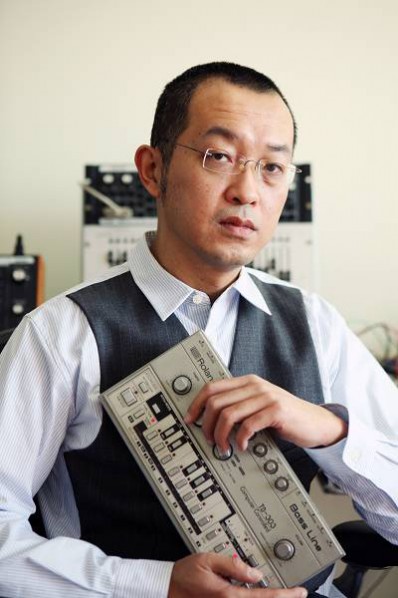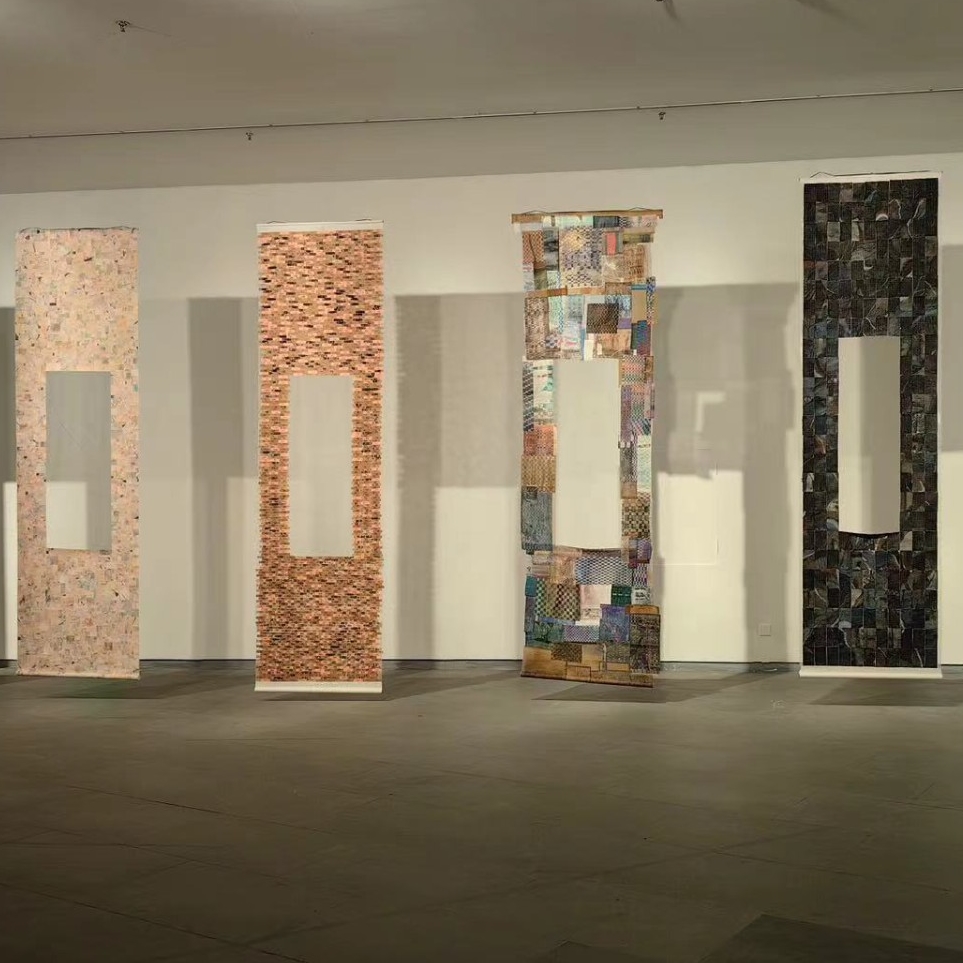
Feng Mengbo; Courtesy of the artist and Global Times
Source: Global Times Date: November 09, 2010
Despite the elusive and complicated significances in his artworks, Feng Mengbo is actually a friendly, easygoing figure. Aware that many have difficulties comprehending the ideas behind his art, Feng explains every detail as clearly as possible. We met at his brightly lit, highly organized studio in Xibahe, Beijing where he keeps his collection of LP records and all the equipment he needs for his artworks.
Feng, 44, was the first Chinese artist to utilize computers and the Internet. One of his latest works, Not Too Late, is currently exhibited in Decode: Digital Design Sensations, an exhibition showcasing artists specializing in developing digital design brought over by the V&A Museum in London, to Beijing's CAFA Art Museum. "When I was invited to participate in this exhibition, I didn't know what I was going to do," Feng says. Not Too Late is an interactive digital piece based on Chinese characters and calligraphy.
But lately Feng is more excited by his upcoming showcase starting December 12, at MoMA PS1 gallery in New York, after they acquired Feng's interactive artwork, Long March: Restart, a retro Super Mario-style work with a Long March Red Army soldier replacing the eponymous plumber. "I am the first Chinese who has the honor of having the chance of a solo exhibition in MoMA PS1."
Beyond violence
Having majored in engraving paintings in the Central Academy of Fine Arts (CAFA), Feng, a native Beijinger, has combined his educational background perfectly with modern video games. "I was inspired in the early 80s, when my father sent me my first video game." Back then, the young Feng particularly liked games like Super Mario and Duck Hunting. "My works are all deeply influenced by my experiences of playing video games," Feng's tone is peaceful, like a scientist analyzing his experiment data.
The most inspiring and interesting part in a digital art exhibition might be the audiences' interactions with the artworks. Yet, for Feng, this is not the case. "In new media art, when an artwork is finished, it's already completed. Audiences don't have to interact with the artworks so as to fulfill them. They can choose either to just appreciate the art or to get involved with them," Feng elaborates.
"The history of new media art is pretty short, but it is getting popular very quickly around the world, because people can seemingly influence the artworks. But I think this is boring. The most crucial thing is art itself. I'll never be restricted by this rule, say, to let the audiences get involved in creating an artwork."
Some of Feng's previous interactive video artworks, including Q3, Q4U, and A-Q, concentrate on the theme of violence. Asked why, he explains: "I like action games, action movies, or even books. You can see that blockbusters are almost all action movies. I think they have reflected some part of human nature. And the actions have revealed a certain aesthetic." The titles of these artworks are derived from the video game, Quake III Arena, a first-person shoot-em-up video game.
Postmodern artworks
Even so, Feng hates the insistence of some observers and critics of constantly referring to an "aesthetic of violence" in his work, feeling this term is not precise enough to describe his art. "There are so many reports saying my works belong to the aesthetic of violence. This is extremely inappropriate. In the latest artwork, although there are missiles everywhere in the scene, you can see nothing related to violence. The blood has transformed into red ink in my design."
Feng's art is about?interactive multimedia works, using gaming rules and ideas to create.
His groundbreaking attempts of applying multimedia to creating arts have won him an international reputation and several prizes, including an Award of Distinction of CyberArts in 2004 at the Prix Ars Electronica in Austria. Yet, because it's essentially avant-garde, "few reporters write a profile about me. They know how difficult this piece will be," Feng confesses, still in a seemingly emotionless tone.
When asked if he feels "isolated" from his artworks because he has no direct sensory access to them, Feng doesn't consider this a problem. "Take music for example. In ancient times, people could only appreciate music at concerts. Later, they can preserve music on LPs, then CDs, MP3s, and now everyone can download music from the Internet. Is this a problem? No. Music always exists."
Feng's not confused about the virtual reality he's built in cyberspace. He clearly knows everything he's created is going to vanish when the computer is switched off. "We don't have to grasp everything to keep it. Things fade away all the time. It's precious for artists to get accustomed to the feelings I'll call 'void.'"
In Not Too Late, the transitory becomes the eternal. "The scene has recorded the ever-changing movements. But you know that all of these are past tense; they happened before. And I have to admit that my art is abstract," Feng says.
Trajectory
This time, Feng has added the element of Chinese calligraphy. Based on the concept of Quake III Arena, he created his own modification (MOD), in which the time frame is totally slowed, so that you can see the trajectory of the movement on the screen. All the movements of the characters are replayed at a speed 10 times slower than the original one. As a consequence, the scenes are not as violent and bloody as in the original game. The trajectory of bullets and fire is largely preserved, but the scene looks like a calligraphic masterpiece.
"I love this game very much, so I've tried hard to apply this game to the realm of art. I've created several artworks about this, and there's always something different," he says. Feng particularly mentions the concept of the "automatic painting system," which inspired him.
"The automatic painting system can simulate the process of drawing a painting. This is an innovative device," Feng explains. "I think this piece is just like an abstract painting. You can observe the flux of different colors."
Although Feng adopts video games to represent his style, "I am thinking about the old-fashioned painting device and wondering if it's possible to revive this in this day and age." He already had a blueprint before creating his artworks. "Since 1999, I've begun to use this procedure [MOD]. The more I am familiar with it, the more I understand how many possibilities there could be. In Not Too Late, the experiences I've accumulated in these years are well-represented."
About the Writer
Lin Kan Hsuan (Celine Kan-hsuan Lin) is a journalist and editor who now lives and works in Beijing. She has written in-depth reports about exhibitions and artists for Global Times( China) since 2010. Also she has proofread and translated articles for Landmark English Magazine, American Magazine Center in 2009.
For more information, please contact 28start@gmail.com
The views expressed in this column are the author’s own and do not represent those of CAFA ART INFO.




























